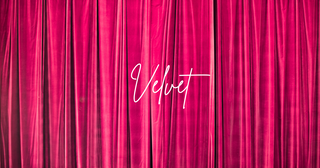When it comes to luxurious and elegant fabrics, velvet undoubtedly takes center stage. Known for its softness, rich texture, and captivating sheen, velvet has been a popular choice for apparel throughout history.
From glamorous evening gowns to stylish blazers and accessories, velvet continues to captivate fashion enthusiasts. In this article, we will delve into the advantages, disadvantages, and potential pitfalls of using velvet as an apparel material, helping you make informed decisions when incorporating it into your wardrobe.
Advantages of Velvet
Luxurious Appeal
Velvet's luxurious appeal is its standout feature. The fabric's pile, composed of densely woven fibers, creates a soft, plush texture that adds depth and opulence to any garment.

Versatility
Velvet can be used for various clothing items, from formal evening wear to casual pieces. It effortlessly transitions from elegant dresses and suits to chic blouses, skirts, and even accessories like scarves and handbags.
Exceptional Draping
The fluidity and drape of velvet make it an excellent choice for creating flowing silhouettes and flattering curves. It lends a graceful and elegant touch to any outfit, enhancing the wearer's femininity or masculinity.

Excellent Color Saturation
Velvet absorbs dyes exceptionally well, resulting in vivid, deep colors. This quality allows designers to experiment with a broad range of shades, from jewel tones to pastels, creating visually striking garments.
Seasonal Versatility
Velvet is suitable for various seasons. In colder months, its dense composition provides warmth, while in milder weather, lighter velvet blends can be used to achieve a comfortable and stylish look.
Disadvantages of Velvet
Maintenance and Care
Velvet requires special attention when it comes to cleaning and maintenance. It is often recommended to dry clean velvet garments to preserve their softness and luster. Spills and stains can be challenging to remove, making it necessary to handle with care.
Prone to Crushing
Velvet is susceptible to crushing and flattening of the pile, resulting in an altered appearance. It is important to store velvet garments carefully, avoiding excessive pressure or folding, to maintain their original texture and shape.

Limited Stretch and Breathability
Unlike some other fabrics, velvet offers limited stretch, which can restrict movement and comfort. Additionally, the dense nature of velvet can make it less breathable than lighter materials, potentially causing discomfort in warmer weather.
Expense
As a high-quality and luxurious fabric, velvet can be relatively expensive compared to other materials. The cost of production, combined with its popularity, can result in higher price points for velvet garments.
Potential Pitfalls of Velvet
Attracts Lint and Dust
Velvet's textured surface tends to attract lint, dust, and pet hair. Regular maintenance, such as brushing or using a lint roller, is necessary to keep the fabric looking pristine.
Limited Durability
Due to the delicate nature of the pile, velvet may show signs of wear and tear over time, especially in high-friction areas like elbows or seat areas. It is advisable to reserve velvet garments for special occasions or events to prolong their lifespan.
Velvet, with its timeless allure, continues to be a popular choice in the world of fashion. While it offers numerous advantages, such as its luxurious appeal, versatility, and exceptional draping, there are also certain disadvantages and pitfalls to consider.
These include the need for special care and maintenance, its limited stretch and breathability, potential crushing, and the expense associated with this high-quality fabric. By weighing these factors, you can make informed decisions when incorporating velvet into your wardrobe, ensuring that you make the most of its unique qualities while considering its limitations.

